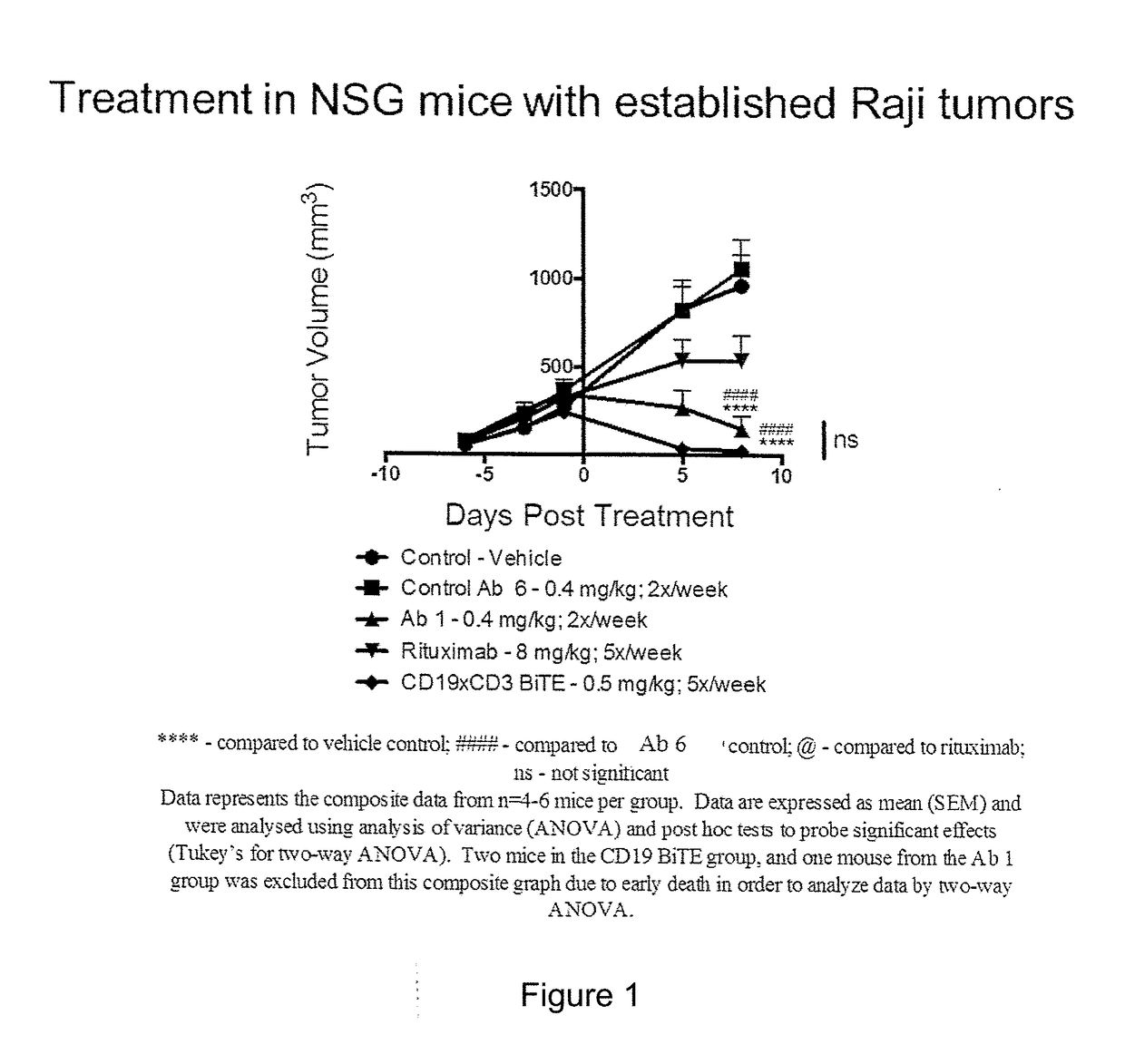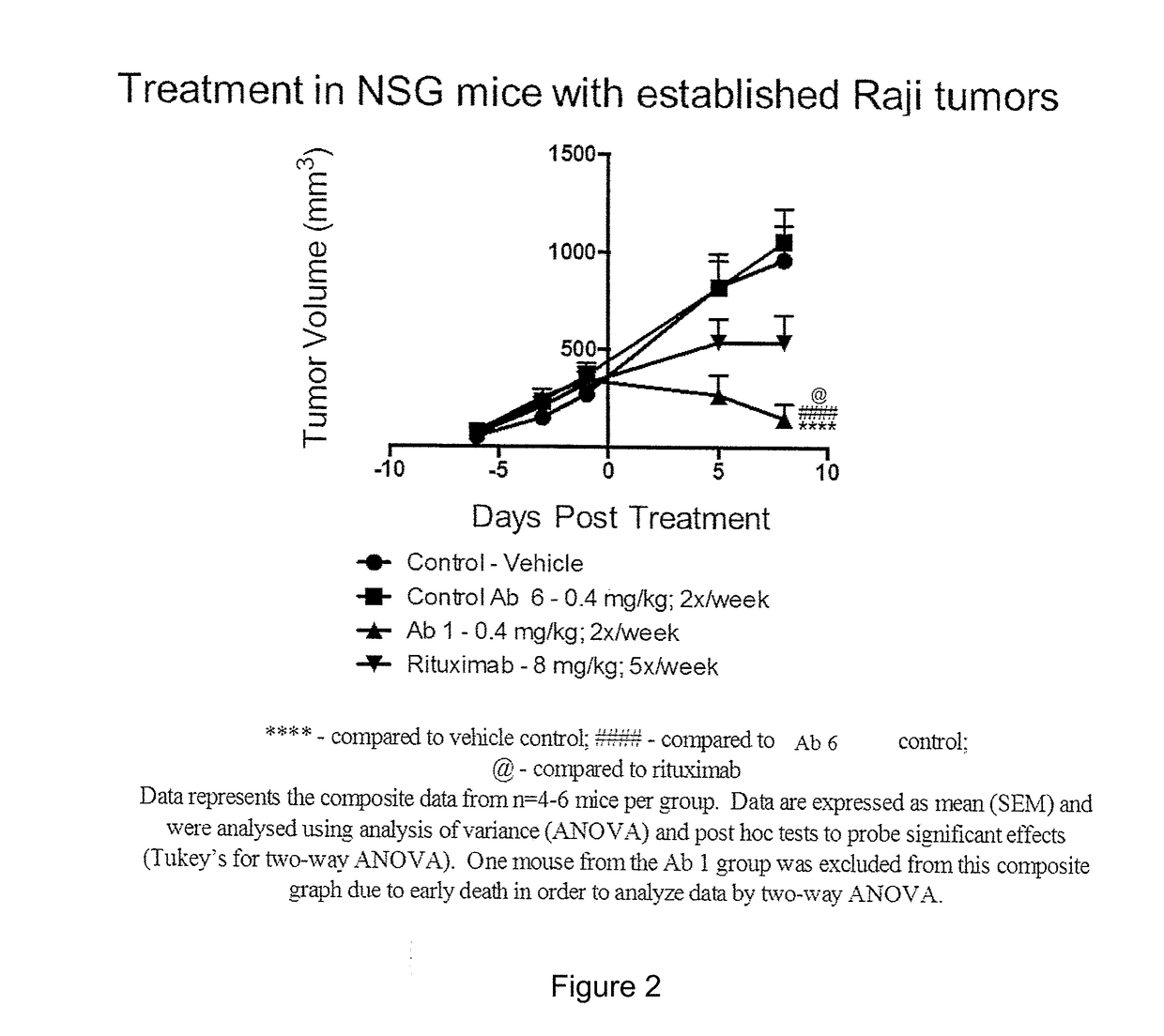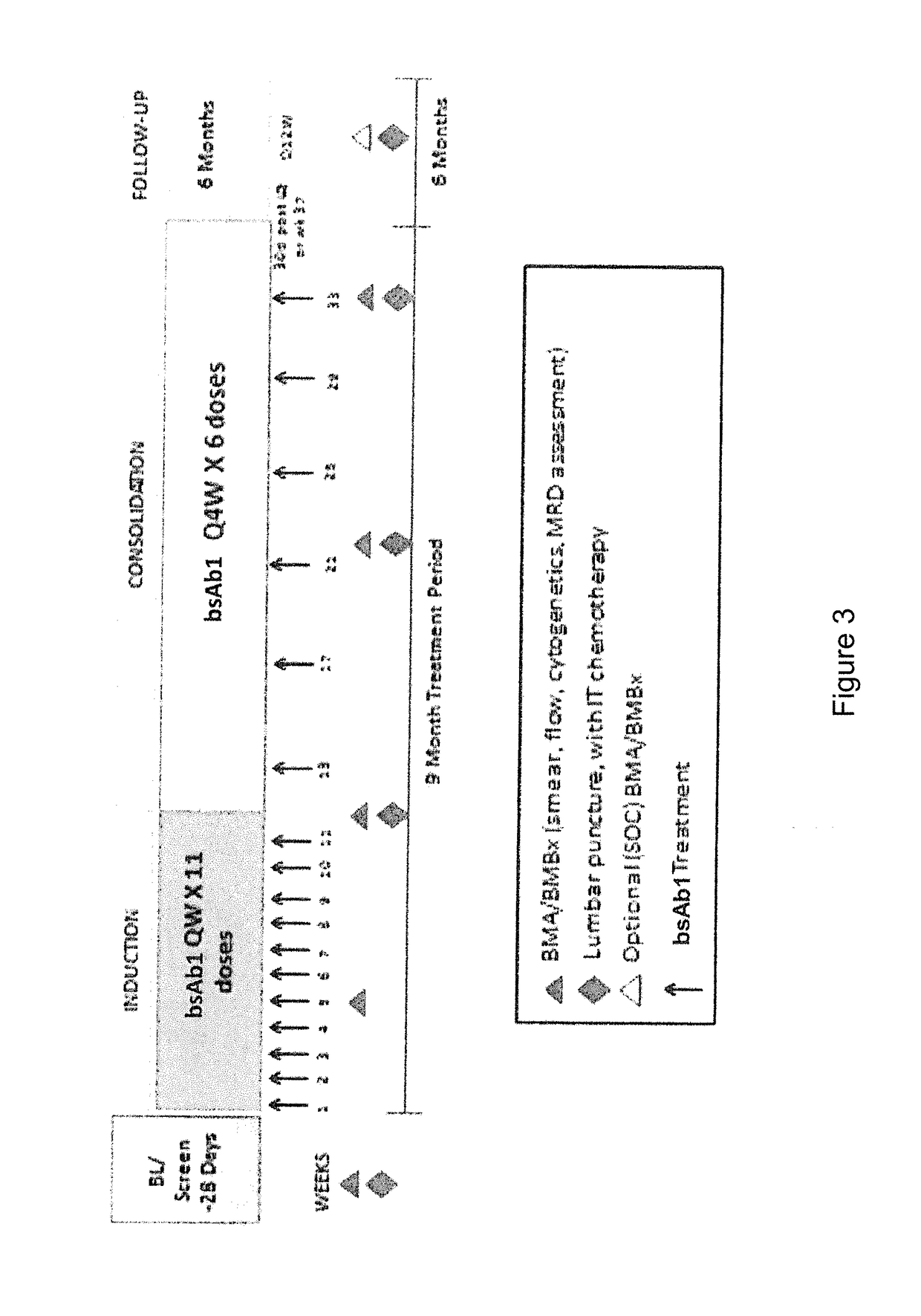Bispecific Anti-CD20/Anti-CD3 Antibodies to Treat Acute Lymphoblastic Leukemia
a lymphoblastic leukemia and antibody technology, applied in the field of medicine, can solve the problems of poor prognosis of aggressive lymphomas, poor prognosis of acute lymphoblastic leukemia in adults, and inability to respond to all patients, so as to improve survival, delay the reduction of leukemic cell number, and increase the effect of survival
- Summary
- Abstract
- Description
- Claims
- Application Information
AI Technical Summary
Benefits of technology
Problems solved by technology
Method used
Image
Examples
example 1
with CD3×CD20 Bispecific Antibody is More Effective than Anti-CD20+ Antibody in NSG Mice with Established Raji Tumors
[0093]The efficacy of selected anti-CD3×CD20 bispecific antibodies in reducing established tumors in NSG mice was assessed. NSG mice (NOD / LtSz-scid / IL2Rγnull mice; Jackson Laboratories) were subcutaneously co-implanted with Raji tumor cells (2×106) and human PBMCs (5×106)(at Day −14). Tumors were allowed to establish in the host for 14 days prior to treatment.
[0094]The CD20×CD3 bispecific Ab1 (also known as bsAB1 and REGN1979) (dosed at 0.4 mg / kg; 2× / week i.p.) was comparable to the CD19×CD3 BiTE (dosed at 0.5 mg / kg; 5× / week i.v.) (FIG. 1) and superior to rituximab therapy (dosed at 8 mg / kg; 5× / week i.p.) (FIG. 2) in suppressing established Raji tumors, thereby demonstrating that Ab1 (also known as bsAB1 and REGN1979) was effective at treating mammals with large lymphoma masses greater than 0.5 cm in volume.
example 2
Trial of Anti-CD20×CD3 Antibody in Patients with Acute Lymphoblastic Leukemia
[0095]This study is an open-label, multicenter, dose escalation study with multiple dose escalation and expansion arms to investigate the efficacy, safety, and tolerability of anti-CD20 / anti-CD3 bispecific antibody in adult patients with acute lymphoblastic leukemia.
[0096]The exemplary bispecific anti-CD20 / anti-CD3 antibody used in this Example is REGN1979 (described in Example 1 herein).
[0097]The primary objective of the study is to assess safety, tolerability and dose-limiting toxicity (DLT) of REGN1979 in patients with Acute Lymphoblastic Leukemia (ALL).
[0098]The secondary objectives of the study are: (i) to determine a recommended dose for: REGN1979 in patients with ALL; (ii) to characterize the pharmacokinetic (PK) profile of REGN1979; (iii) to assess the immunogenicity of REGN1979; and (iv) to study the preliminary antitumor activity of REGN1979 in ALL, as measured by overall response rate, minimal re...
PUM
| Property | Measurement | Unit |
|---|---|---|
| pH | aaaaa | aaaaa |
| concentration | aaaaa | aaaaa |
| time | aaaaa | aaaaa |
Abstract
Description
Claims
Application Information
 Login to View More
Login to View More - R&D
- Intellectual Property
- Life Sciences
- Materials
- Tech Scout
- Unparalleled Data Quality
- Higher Quality Content
- 60% Fewer Hallucinations
Browse by: Latest US Patents, China's latest patents, Technical Efficacy Thesaurus, Application Domain, Technology Topic, Popular Technical Reports.
© 2025 PatSnap. All rights reserved.Legal|Privacy policy|Modern Slavery Act Transparency Statement|Sitemap|About US| Contact US: help@patsnap.com



